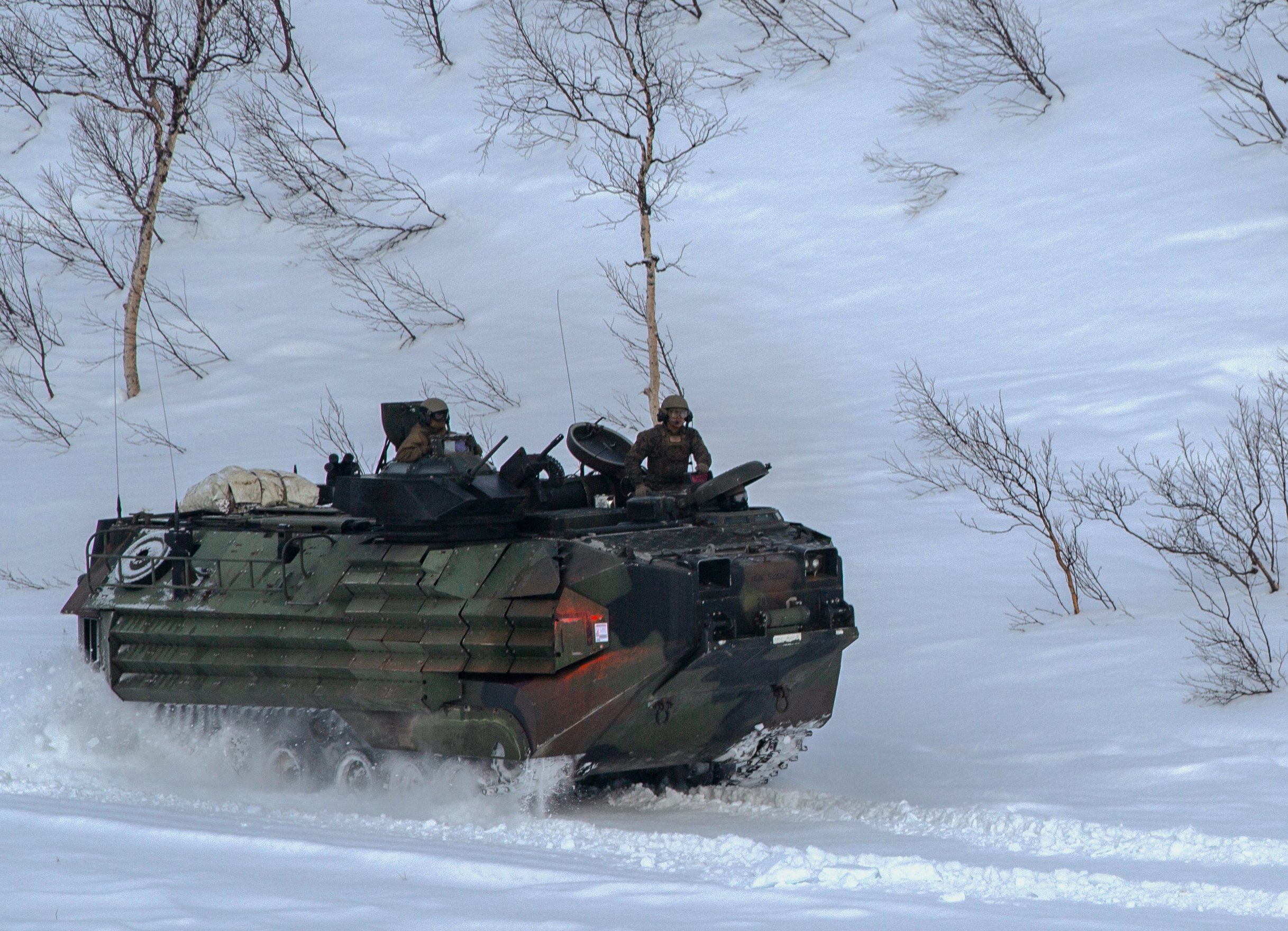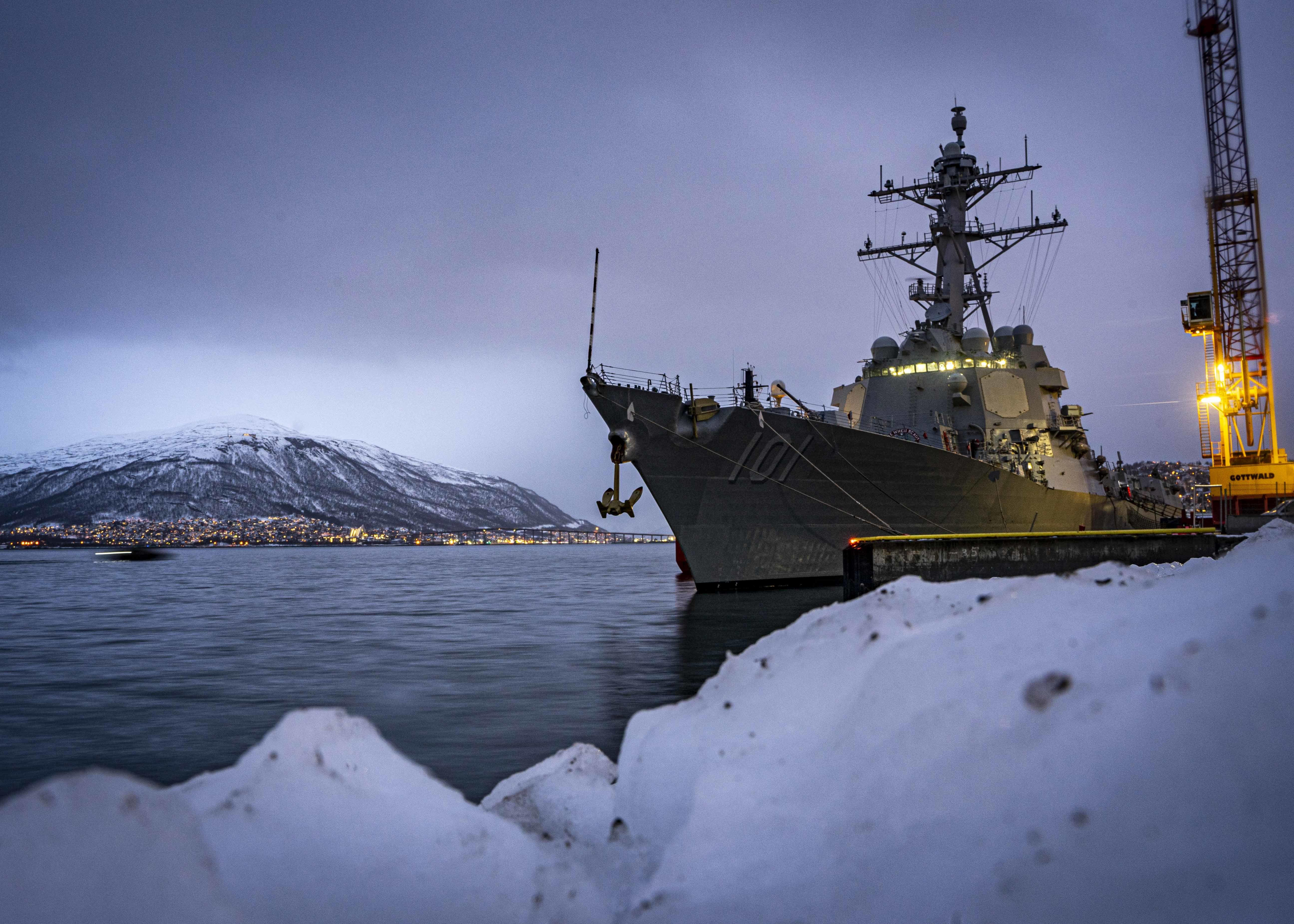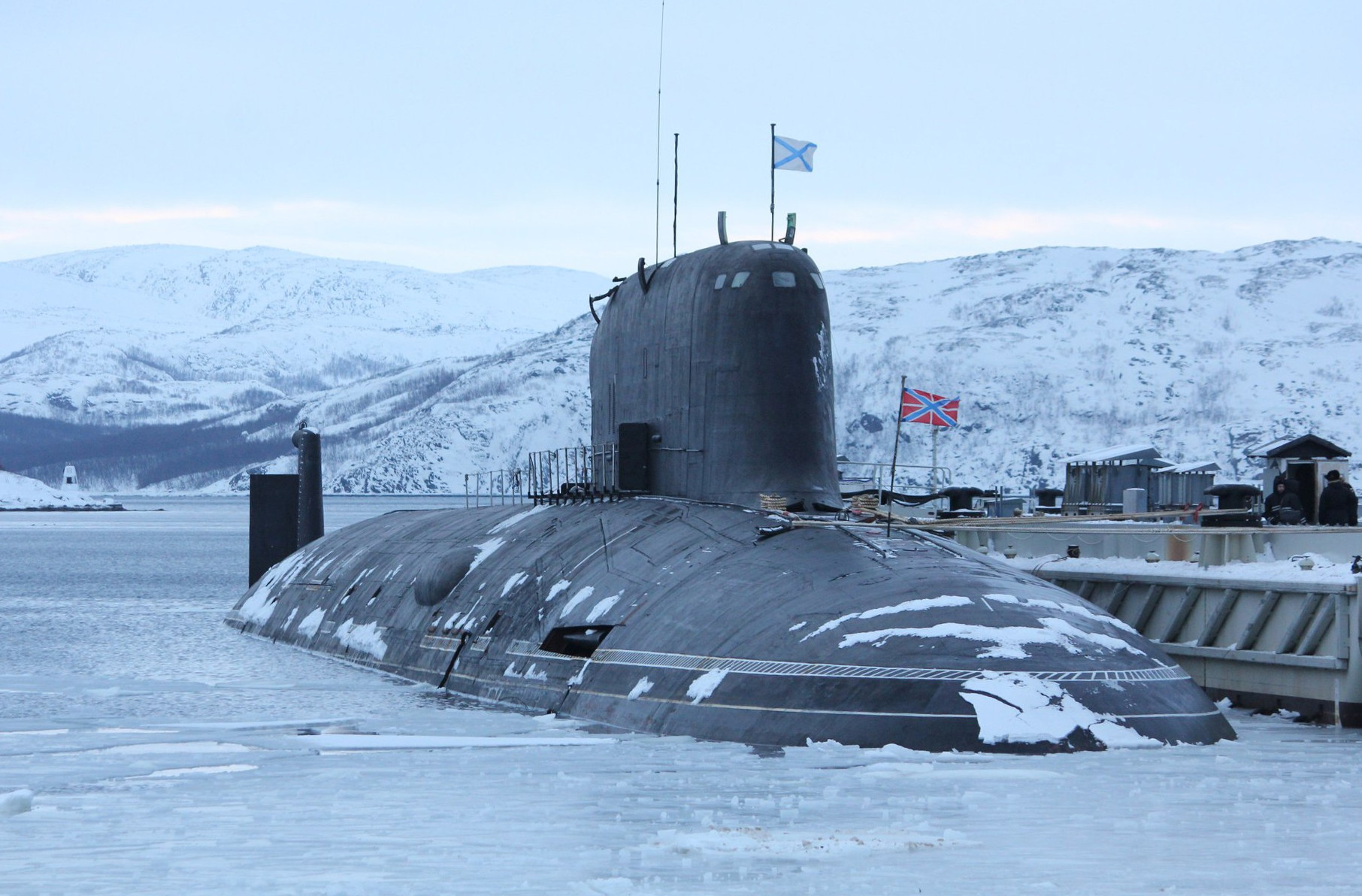
Russia’s heavy investment in new ballistic missile submarines and long-range precision strike weaponry signal the Kremlin’s will to challenge NATO’s ability to reinforce the High North in a crisis, Norway’s top diplomat said Friday.
“The security landscape is getting more difficult,” Ine Ericksen Soreide said at The Atlantic Council on Friday.
Russia has built up a military presence in the Arctic over the last 10 years and deployed advanced strategic weapons, including submarines and missiles. The Kremlin also has built new air bases, giving its air force a longer reach into the Atlantic.
Norway “is the only NATO member bordering Russia,” so it is monitoring the military build-up and increased civilian economic development on the other side of the border closely, according to Frank Bakke-Jensen, Norway’s minister of defense. Adding another dimension to military changes in the Arctic, he identified the Barents Sea as “optimal to test new weapons systems” for Russia’s armed forces.
Norway is “NATO’s eyes and ears to the North,” Soreide, who previously served as defense minister, added. She also noted that Norway is different from other Arctic nations with its ice-free waters, caused by the flow of the Gulf Stream from North America across the Atlantic, making it strategically important geographically.
Russia shares both land and water borders with Norway. Historically, “we meet Russia with firmness and predictability,” Soreide said. But ever since 2014, when Moscow seized the Crimea region from Ukraine, Oslo has been more wary of the Kremlin’s intentions across Europe. It also cut off direct exchanges between the two militaries at the time.
“If we don’t stand up to that [overt aggression as in Crimea and eastern Ukraine], who will?” she questioned, referring both to economic sanctions levied on Russian businesses and individuals and a renewed commitment to security spending in the alliance.
Bakke-Jensen, who has been defense minister for three years, said Norway is meeting the 2 percent of gross domestic product spending target that NATO set in response to the Crimean seizure. He pointed to more recent buys of F-35 Lightning II Joint Strike Fighters and P-8A Poseidons patrol aircraft and new submarines as examples of where Oslo is putting its defense dollars. He added that Norway also upped its research and development security spending by 30 percent in recent years and said the investment can help with intelligence operations. In 2019, the reported Norwegian defense budget was about $7.2 billion.

While Norway continues to cooperate closely with Russia on nuclear safety issues, fisheries and search and rescue in the Arctic, Soreide said that transparency hasn’t translated into Moscow’s sharing information with Oslo on military exercises that it’s holding near their shared border and waters.
Soreide termed Russia’s attitude now as “much more assertive.”
By contrast, she said NATO and Norway itself during the 2018 Trident Juncture exercise regularly informed Russia’s Northern Fleet about what was transpiring to avoid any miscalculation. “We’re extremely open with our exercises,” including regularly schedules ones with American Marines, but “we don’t see the same thing from Russia.”
During the conference, four American Air Force B-1 bombers were training with Norwegian air forces.
Terming Russia “a demanding neighbor,” Bakke-Jensen said security cooperation has grown to include Nordic countries like Sweden and Finland and Baltic NATO members in regional training exercises.
In the panel discussion following Bakke-Jensen’s remarks, Henning Vagium, director-general for security policy in Norway’s defense ministry, said that for all Nordic countries there has been renewed emphasis on defense and deterrence since 2004. He called Sweden’s and Finland’s militaries “highly capable” and said they are working effectively with NATO forces in the Arctic and Baltic. The two nations also add their expertise in confronting Russia’s “gray zone” challenges and disinformation ploys to defense and deterrence, Vagium added.
Bakke-Jensen welcomed the establishment of Joint Command Force-Norfolk and 2nd Fleet, operational since 2019, as important steps for the alliance and the United States in keeping the transatlantic sea lanes of communications open in a crisis.
Closer to home, Bakke-Jensen said that while talks with his Kremlin counterparts continue, the two nations have not been able to establish a hotline between Norway’s military and the Russian Northern Fleet. He kept open the possibility of working with Moscow to “what we’ve been successful with,” such as Coast Guard operations and search and rescue protocols as a means to reduce tensions in other areas.

Unlike other Arctic nations, 9 percent of Norway’s population lives above the Arctic Circle, where it has cities, industry, technology hubs and universities. The Gulf Stream “changes the calculus for us.” Soreide stressed the importance Norway put on the United States rejoining the Paris Agreement on climate. “Climate change happens twice as fast in the Arctic” than in other places. This has major implications for Oslo militarily, economically and environmentally.
Soreide said climate change in the warming Arctic was attributable to the “rise of global emissions,” rather than increased human activity in the north. One of the goals of the 2016 Paris agreement is to reduce global warming by 2-degrees Celsius by cutting greenhouse gas emissions.
As for China’s increased interest in the Arctic, she said as an observer to the Arctic Council Beijing has “been helpful so far.” Its interests have been “relatively limited [to] research and climate,” but that does not mean Beijing’s ambitions will not grow over time.

“We see the cooperation with Russia on energy and gas,” Bakke-Jensen said, but “I don’t think Russia is too keen on giving China” too big a role in the region. “They are dancing a difficult tango.” With the Northern Sea Route opening up for longer periods of time to shipping and Beijing’s building of heavy icebreakers, “we expect them to be more active.”
In the years ahead, NATO needs to recognize that in the Arctic “the threats [not only militarily] are coming at us [from] 360” degrees, Angus Lapsley, director general of strategy in the United Kingdom’s ministry of defense, said in the panel discussion.
Bakke-Jensen cited China’s investment in mining in Greenland and interest in building airports on the island. Beijing also has actively explored possibilities in Canada’s Northwest Territories and infrastructure projects in Iceland.
Soreide wanted to keep the Arctic Council’s focus on non-security matters – like fisheries, communications, scientific research, et al. The region “does not need new governance structures,” but must “uphold the ones we have,” like the U.N. Convention on the Law of the Sea, she said.





